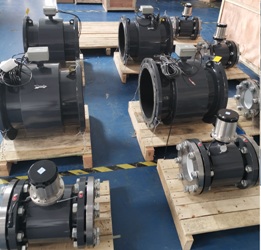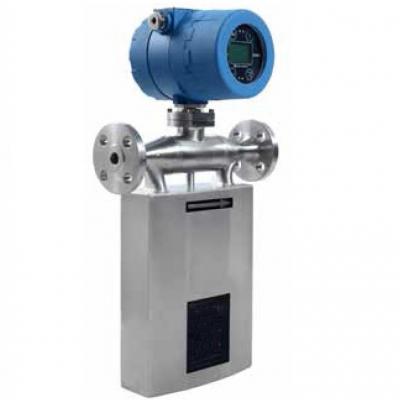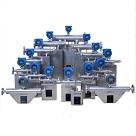What is sludge? And why sludge flow measurement is a tough job?
Sludge is a semi-solid, thick, and viscous material that is typically generated as a byproduct during various industrial, municipal, or wastewater treatment processes. It consists of a mixture of solids, water, and other materials that are left behind after the treatment or purification of liquids.
When it comes to choosing a flowmeter for sludge applications, there are several factors to consider. Sludge is a challenging fluid to measure due to its high viscosity, potential for abrasiveness, and varying consistency. While no flowmeter is universally "best" for all sludge applications, some types are commonly used and offer advantages in specific scenarios
Because the sludge or slurry contains solids, flowmeters with movable components, such as liquid turbine flow meters, cannot be measured. Liquid turbine flowmeters are suitable for pure and clean liquid flow measurement; viscous slurry is also not suitable for vortex flow meters, as sludge can damage the vortex flow sensor probe. Coriolis mass flow rate is the most accurate sludge flow meter, but it is also the most expensive flow meter.
And why we need sludge flow meter?
Sludge can be formed from a wide range of sources, including sewage treatment plants, industrial processes, agricultural activities, and stormwater runoff. In sewage treatment plants, for example, sludge is generated as a result of the biological and physical treatment processes that remove solid materials and organic matter from wastewater.
Managing and disposing of sludge is an important aspect of wastewater treatment and environmental protection. Sludge is often subjected to further treatment processes, such as dewatering, stabilization, and disinfection, to reduce its volume, eliminate pathogens, and make it safer for disposal or potential reuse, such as in agricultural applications or energy generation. So it is important to have an accurate sludge flow meter.
Which flowmeter is best for sludge?
The selection of the most suitable flowmeter depends on the specific characteristics of the sludge, such as viscosity, solids content, and particle size distribution. It is recommended to consult with flowmeter manufacturers or industry experts to determine the best option for your particular sludge application.
Magnetic Flowmeters for sludge flow measurement-most economical option but not suitable for all sludge application.
Mag flowmeters use Faraday's law of electromagnetic induction to measure flow. They are often suitable for sludge applications because they have no moving parts, reducing the risk of clogging or damage. However, they may struggle with sludge containing abrasive particles.
We usually use wear-resistant polyurethane as the lining material and tungsten carbide as the electrodes material to measure the volume flow of sludge. Special flow transmitters should be used to overcome slurry noise and achieve accurate measurement when measuring mud using electromagnetic flow meters. The solid content of this sludge should not exceed 50%, and the slurry temperature should not exceed 60°C (due to rubber lining).
Commonly used
electromagnetic flow meters measure slurry sizes, such as 4 ", 5", 6 ", 8" 10 inch, 12 inch
Electromagnetic flow meter is a cheap and commonly used slurry flow meter, which has been widely used by many customers and has achieved good results.
Best accuracy flow meter for sludge flow measurement-Coriolis flow meter
Coriolis flow meters are commonly used in sludge flow measurement applications due to their ability to handle high-viscosity fluids and their resistance to clogging. A Coriolis flow meter operates on the principle of Coriolis force, where a vibrating tube is subjected to the fluid flow. The fluid flow causes the tube to twist, and the amount of twisting is directly proportional to the mass flow rate.
Here are some reasons why Coriolis flow meters are suitable for sludge flow measurement:
-
Accurate Measurement: Coriolis flow meters provide highly accurate measurements of mass flow rate, density, and temperature, regardless of fluid viscosity. They can handle the high-density and non-Newtonian behavior often associated with sludge, the accuracy of sludge flow measurement can reach to 0.3% or even higher.
-
Wide Viscosity Range: Coriolis flow meters can measure a wide range of fluid viscosities, making them suitable for both thin and highly viscous sludge.
-
Self-Cleaning Capability: The vibrating tubes in Coriolis flow meters can help prevent the buildup of solids or debris, reducing the risk of clogging and ensuring reliable measurements in sludge applications.
-
No Moving Parts in Contact with Fluid: Coriolis flow meters do not have any moving parts that come into direct contact with the fluid, minimizing the risk of wear or damage from abrasive particles present in the sludge.
-
Multivariable Measurement: In addition to flow rate, Coriolis flow meters can provide simultaneous measurements of density and temperature, concentration of the solids, which can be useful for process control and monitoring.


 Slurry Magnetic Flow Meter2018/11/21SHD-SE16 Series Slurry Magnetic Flow Meter is for flow measurement in high-noise slurry applications; flow sensors for sludge, slurries and solids.VIEW
Slurry Magnetic Flow Meter2018/11/21SHD-SE16 Series Slurry Magnetic Flow Meter is for flow measurement in high-noise slurry applications; flow sensors for sludge, slurries and solids.VIEW Asphalt /bitumen flow meter2018/09/30Asphalt flow measurement is always a technical problem because of the high viscosity and poor fluidity. The operation temperature of the pipeline liquid asphalt is usually around 200 ° C(392℉).VIEW
Asphalt /bitumen flow meter2018/09/30Asphalt flow measurement is always a technical problem because of the high viscosity and poor fluidity. The operation temperature of the pipeline liquid asphalt is usually around 200 ° C(392℉).VIEW Coriolis mass flow meter2019/06/12Best accuracy flow meter
Coriolis mass flow meter2019/06/12Best accuracy flow meter